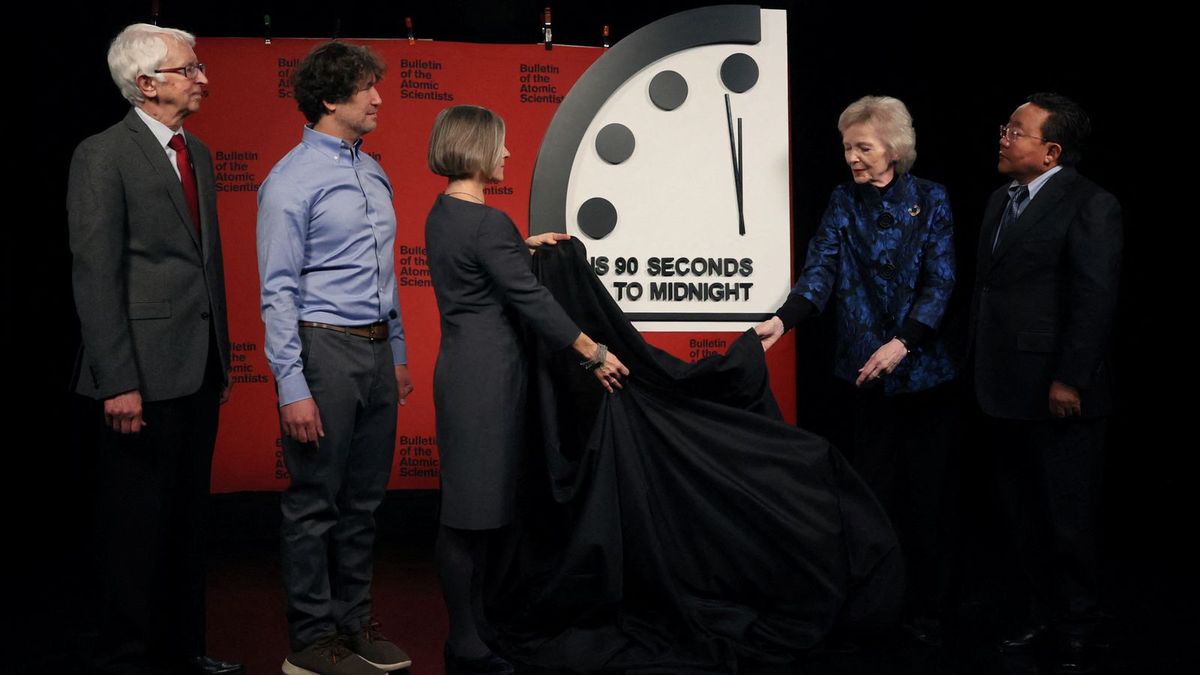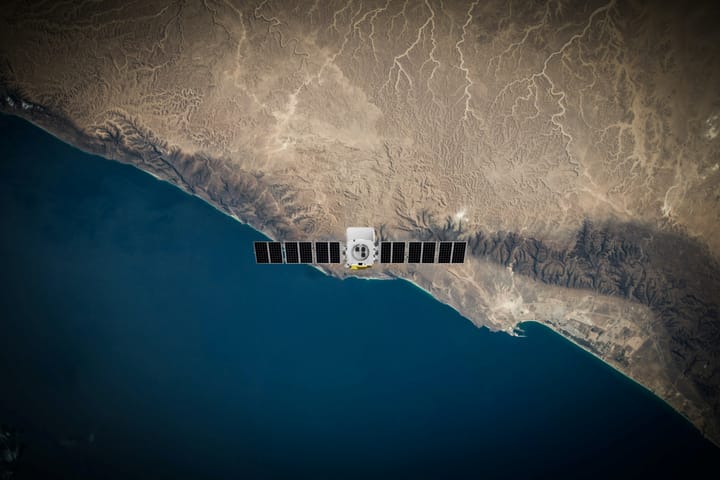The Doomsday Clock is now 90 seconds to midnight. What does that mean?
When the Doomsday Clock was first set up, it was around seven minutes to midnight.

A few minutes every morning is all you need.
Stay up to date on the world's Headlines and Human Stories. It's fun, it's factual, it's fluff-free.
The backstory: The Doomsday Clock is a symbolic timepiece invented in 1947 by Albert Einstein and other scientists that worked on the atomic bomb. A Chicago-based non-profit organization called the Bulletin of the Atomic Scientists moves the hands of the clock every January based on threats our world is perceived to be facing. They can also turn the clock's hands back if they think we're getting further away from an existential threat. Existential threats that move the hands include political conflicts, weapons, technology, climate change, pandemics and others. So, it basically counts down to the end of the world – when it gets to midnight, that's when we're, theoretically, done for.
More recently: When the Doomsday Clock was first set up, it was around seven minutes to midnight. It was at its furthest from midnight (17 minutes) in 1991 when the Cold War ended. The hands have been moving closer and closer to "doomsday" ever since. It was set to 100 seconds to midnight in 2020 – the first time it was down to seconds instead of minutes – and stayed there in 2021 and 2022.
The development: Now, according to the Bulletin of Atomic Scientists, the world is closer to annihilation than since the first nuclear bombs were dropped on Japan at the end of World War II. On Tuesday, the group moved the hands of the clock to just 90 seconds to midnight. A few reasons for this are the threat of nuclear weapons in Russia's war on Ukraine, climate change getting worse and the possibility of more pandemics. This is the closest the clock has ever been to midnight – or the end of the world as we know it.
Key comments:
"The threats are even more acute, and the failures of leadership even more damning. We live today in a world of interlocking crises, each illustrating the unwillingness of leaders to act in the true long-term interests of their people," said Mary Robinson, former Irish president and former UN High Commissioner for Human Rights.
"Even if nuclear use is avoided in Ukraine, the war has challenged the nuclear order – the system of agreements and understandings that have been constructed over six decades to limit the dangers of nuclear weapons," said Steve Fetter, dean of the graduate school and professor of public policy at the University of Maryland.
"Russia's thinly-veiled threats to use nuclear weapons remind the world that escalation of the conflict – by accident, intention or miscalculation – is a terrible risk. The possibilities that the conflict could spin out of anyone's control remains high," said Rachel Bronson, the Bulletin's president and CEO, to reporters on Tuesday.




Comments ()